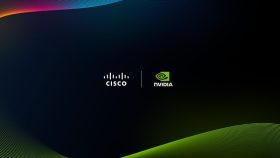NVIDIA Has Joined the Ultra Ethernet Consortium

NVIDIA has finally joined the Ultra Ethernet Consortium (UEC), signaling that it's growing more enthusiastic about Ethernet-based solutions for AI networking.
The news was reported initially in a newsletter item on the UEC site on August 29th and subsequently picked up by The Next Platform. The UEC does not publish its full membership list on the website, but NVIDIA's logo now appears among those of general members on the group's homepage. And Futuriom has independently confirmed with NVIDIA that the company has joined.
The UEC is an industry standards group aiming to deliver an upgraded version of Ethernet for AI workloads in high-performance computing (HPC) environments. They are also targeting large-scale "back-end" networking that fuels the infrastructure behind training large language models (LLMs), as well as networking infrastructure for the "front end," or inferencing AI. By adding features that reduce congestion and improve job completion time (JCT), the UEC hopes to make Ethernet more competitive and more economical than NVIDIA's InfiniBand, which is generally more expensive but is widely deployed in HPC environments because of its features managing large AI data flows.
For its part, joining the UEC does not represent a change of mind, insists one NVIDIA spokesperson. NVIDIA simply decided to support the ecosystem. But the move might also demonstrate NVIDIA sees growing momentum behind Ethernet, which it also supports with its Spectrum-X brand of Ethernet networking products. Although NVIDIA controls the InfiniBand networking market, it has been hedging its bets by developing Ethernet networking in parallel with technology based on its Mellanox acquisition in 2019.
The UEC Gathers Momentum
The UEC has been gathering momentum lately, announcing large numbers of companies being added to the fold. As recently as March, it published a press release announcing 45 new members, but that didn't include NVIDIA at the time.
Many of the top Ethernet networking providers and OEMs such as Arista Networks, Cisco, and Juniper Networks got behind to UEC to build an Ethernet solution for AI infrastructure. Founding members of the UEC included AMD, Arista, Broadcom, Cisco, Eviden, HPE, Intel, Meta, Microsoft, and Oracle.
Here’s how Arista’s CEO Jayshree Ullal put it on an earnings call last year:
“So I think AI networking is going to become more and more favorable to Ethernet, particularly with the Ultra Ethernet Consortium and the work they're doing to define a spec, you're going to see more products based on UEC. You're going to see more of a connection between the back end and the front end using IP as a singular protocol. And so, we're feeling very encouraged that especially in 2025, there will be a lot of production rollout of back end and, of course, front end based on Ethernet.”
NVIDIA’s absence was noteworthy from the start but understandable given its InfiniBand investment. Until recently, NVIDIA executives said only that they might support the UEC as a standard evolved. Here’s one of their public statements:
“We share the vision that Ethernet needs to evolve in the era of AI, and our Quantum and Spectrum-X end-to-end platforms already embody these AI compute fabric virtues. These platforms will continue to evolve, and we will support new standards that may emerge.”
NVIDIA Sees Ethernet Momentum
So why didn’t NVIDIA issue a press release about joining the UEC—which, oddly, doesn’t post a full list of members on its site. What changed?
There is no reason to think NVIDIA is backing away from InfiniBand. Instead, it’s been focused on hedging with Ethernet all along, and its new membership in the UEC may signal additional momentum. NVIDIA is seeing a lot of success with its Ethernet products, including its Spectrum-X platform, which along with a BlueField-3 SuperNIC improves the performance of traditional Ethernet by 1.6X, NVIDIA claims.
By all accounts, the Spectrum-X lineup has taken off. On the recent earnings call, CFO Colette Kress stated:
“Our Ethernet for AI revenue, which includes our Spectrum-X end-to-end Ethernet platform, doubled sequentially with hundreds of customers adopting our Ethernet offerings.
“Spectrum-X has broad market support from OEM and ODM partners and is being adopted by CSPs, GPU cloud providers, and enterprises, including xAI to connect the largest GPU compute cluster in the world. Spectrum-X supercharges Ethernet for AI processing and delivers 1.6x the performance of traditional Ethernet. We plan to launch new Spectrum-X products every year to support demand for scaling compute clusters from tens of thousands of GPUs today to millions of DPUs in the near future. Spectrum-X is well on track to begin a multibillion-dollar product line within a year.”
Perhaps NVIDIA joined the UEC quietly because it sees the advantages of Ethernet in its own product lineup but still wants to support InfiniBand. Or maybe it doesn't want to shine unnecessary light on competitive offerings.
Still, being a UEC member puts NVIDIA closer to the action, shoulder to shoulder with some of its rivals, providing not just a front-row view of the Ethernet spec creation but a way to contribute to it and control how it’s used in NVIDIA products.
Futuriom Take: Despite NVIDIA’s claims, its choice to join the Ultra Ethernet Consortium signals recognition of Ethernet as an emerging standard in AI networking. At the same time, NVIDIA is understandably reticent about Ethernet’s threat to InfiniBand.

















